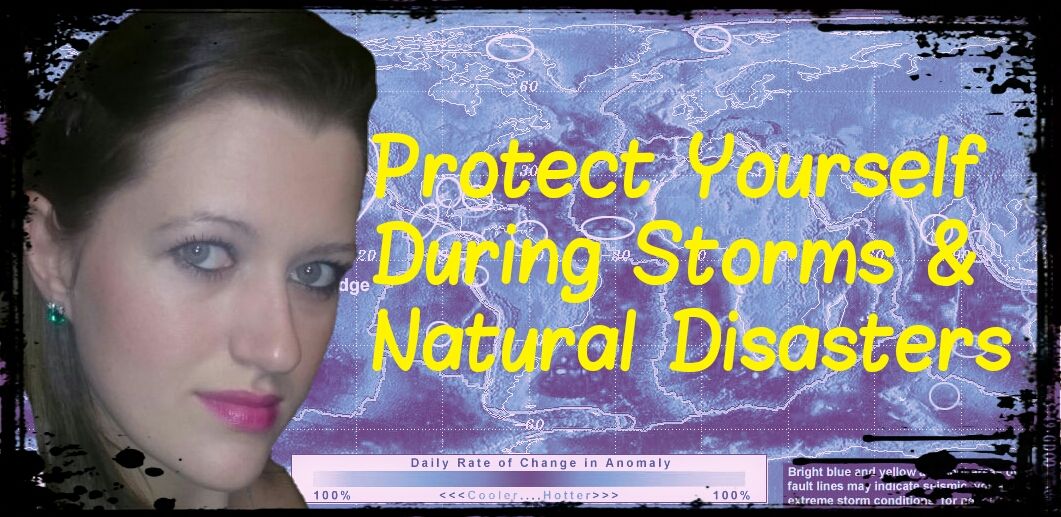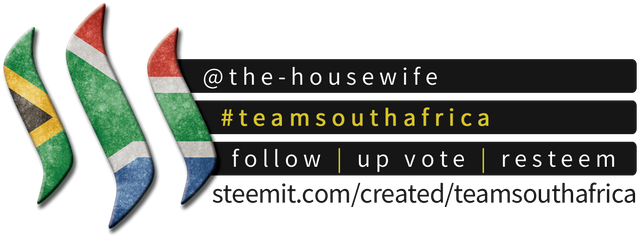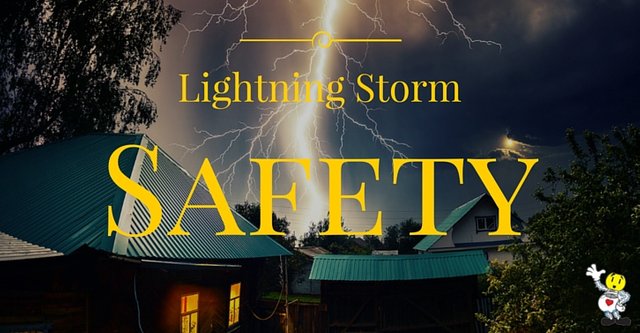Protect Yourself During Storms & Natural Disasters - Part 1 ~ Thunderstorm & Lightning
Due to the recent storms we have experienced here in South Africa lately and the lives lost during these events, it prompted me to do some research and educate myself on what I can do to help protect myself, my family, loved ones and even others around me.
We always read about it on the news but we never know if and when we are in a similar life-threatening situation, so it is better to be prepared and increase our chances of survival.
And I am determined to teach my kids this as much as they can absorb, in the event if they need to look out for themselves.
When we look at the statistics, extreme weather conditions and other natural disaster are increasing around the world.

Storms
Preparation is Key
Know the risks of your area or region to better prepare yourself and to possibly prevent something as well.
Before
- Prepare an emergency kit (First Aid Kit, Flashlights with backup batteries, and Nonperishable Cupboard Food, Water, Insurance Documents, nappies, baby food, clothes, toiletries, medicine, and blankets).
- Cut down any lose or dead trees and branches.
- Make sure your roof is in good repair.
- Always check your weather forecast before going out, especially if you plan to go out on the water or climbing.
- When a storm is imminent, tie down any lose object like trash cans, lawn furniture to prevent property damage or injuring someone during the storm.
- Discuss a plan of action with your family or loved ones to seek out a shelter or go somewhere safe.
- Always have a breakdown kit ready in your car in case you have a flat tire or something else goes wrong.
- Download Storm Radar with NOAA Weather & Severe Warning App on Android or WU Storm for iPhone.
During
- If you are Indoors, stay away from windows, doors, fireplaces and avoid using a corded phone, cellphone use is safer.
- Advised to Evacuate by Officials, do so without delay, take your Emergency Kit with you or have a backup in your vehicle, pack some clothes but travel very light.
- In your car, stop away from trees and power lines and on higher ground to stay away from flooding areas. (If you need to pick up your kids from school or something, rather see if they are not safer at the school than you guys driving on the road or ask if someone trusting can pick them up and meet later at a safer place and time.)
Try not to drive during storms, (unless instructed to evacuate), to prevent traffic for emergency vehicles and to decrease the chance of accidents.
Thunderstorm and Lightning
- Go indoors after seeing Lightning.
- 30/30 Rule: Stay indoors if you cannot count to 30 before hearing thunder. Stay indoors another 30 minutes after hearing the last clap of thunder.
- If you are driving, stay inside your car if it has a hard top and it is not a convertible.
- Rubber-soled shoes and tires do NOT protect you from lightning, it is safer to stay in the car, as long as you are not touching metal, as the hard frame serves as a conductor diverting it to the ground. You may get injured if your car is struck but it is safer in your car than outside.
- When indoors, close shutters, curtains, and blinds.
- Unplug all electronic equipment and avoid any contact.
- Avoid plumbing and bathroom fixtures as these conduct electricity/lightning as well.
- Avoid leaning against concrete walls or lying on concrete floors as there may be electrical wiring inside.
- Avoid natural lightning rods such as tall isolated trees, washing pole etc.
- Avoid open areas such as the sea, lake, hilltops, fields etc.
- Report any damaged power lines IMMEDIATELY!

Image Source
When Someone is Struck by Lightning
People struck by lightning may suffer cardiac arrest, so immediate and aggressive resuscitation greatly improves survival.
- Call 911 immediately and stay on call if possible for further instructions, or else:
- Help the Person When It Is Safe unless you are at risk from ongoing lightning, wait until the danger has passed or move to a safer place, if possible.
- Begin CPR if it is safe to touch the person when the body does not retain an electrical charge, or:
- If the person is unconscious and is not breathing normally, use an automated external defibrillator (AED)
- Do not remove burned clothing unless necessary.
- Treat for Shock, if Necessary
Lay the victim down with head slightly lower than torso and legs. - Call 911 again if you were not on call the whole time
- The emergency medical team will take over once they arrive.

Team South Africa banner designed by @bearone
#teamsouthafrica
https://discord.gg/9KVccPH
(Bringing you Original Content)

@minnowpond1 has voted on behalf of @minnowpond. If you would like to recieve upvotes from minnowponds team on all your posts, simply FOLLOW @minnowpond.